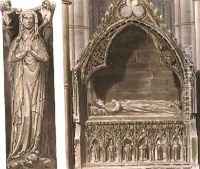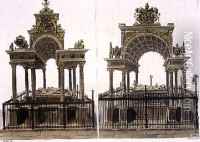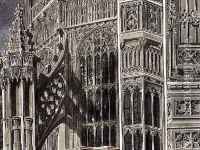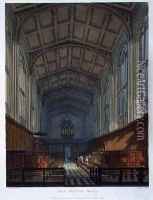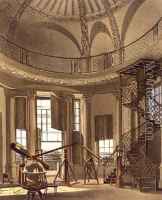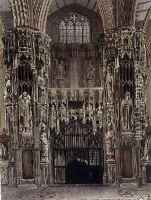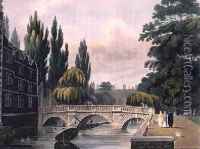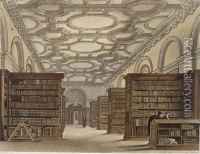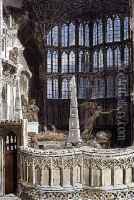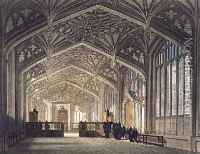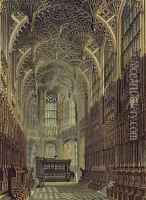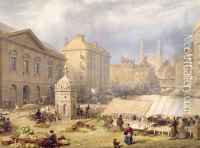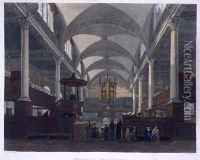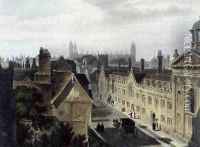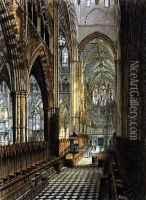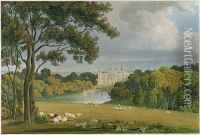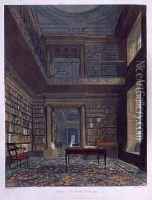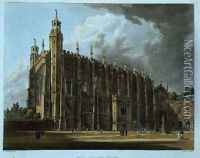Frederick Mackenzie Paintings
Frederick Mackenzie was a British watercolour painter known for his architectural and topographical drawings. Born around 1787 or 1788, Mackenzie's early life is not well-documented, but he likely received his artistic education in London. He became an associate of the Society of Painters in Water Colours in 1821 and was made a full member in 1823. His works were well-received, and he exhibited frequently at the Society's exhibitions.
Mackenzie specialized in detailed renderings of buildings, both interior and exterior views, capturing the Gothic and classical architecture that was prevalent during his time. His works often included figures to add human interest and scale to the scenes. He was particularly noted for his depictions of churches and cathedrals, such as Westminster Abbey and St Paul's Cathedral in London.
In addition to his paintings, Frederick Mackenzie also worked on various illustration projects. He contributed to publications that required precise architectural drawings, which were invaluable for documenting historical edifices. His skills were also sought for recording the appearances of buildings prior to their renovation or demolition.
Despite his success as an artist, little is known about Mackenzie's personal life, and he did not achieve the same level of fame as some of his contemporaries. Nevertheless, his works remain valuable records of British architecture in the 19th century and are appreciated by art historians and architectural enthusiasts alike. Frederick Mackenzie passed away in 1854, leaving behind a legacy of meticulous and informative artworks that continue to be studied and admired in the field of British topographical art.
